The zebra perch (Hermosilla azurea) is a lesser-known but intriguing species found along the Pacific coast of North America, especially in the coastal waters of California and Baja California. Known for its distinctive striped pattern resembling that of a zebra, this fish plays an important role in its marine ecosystem. However, there is ongoing debate regarding its culinary value: are zebra perch good to eat?
This comprehensive article explores the environmental niche of the zebra perch, its ecological role, habitat, diet, and behavioral patterns. We will also take a closer look at the fish’s potential as a food source, examining its taste, preparation methods, and any potential health concerns. By the end, you will have a better understanding of the ecological significance of zebra perch and are zebra perch good to eat.
1. Overview of the Zebra Perch (Hermosilla azurea)
The zebra perch is a marine fish species belonging to the family Kyphosidae, which also includes species commonly referred to as sea chubs. These fish are often found near rocky reefs, kelp forests, and other nearshore habitats. Despite their relative obscurity compared to more popular fish species, zebra perch are an important part of coastal ecosystems.
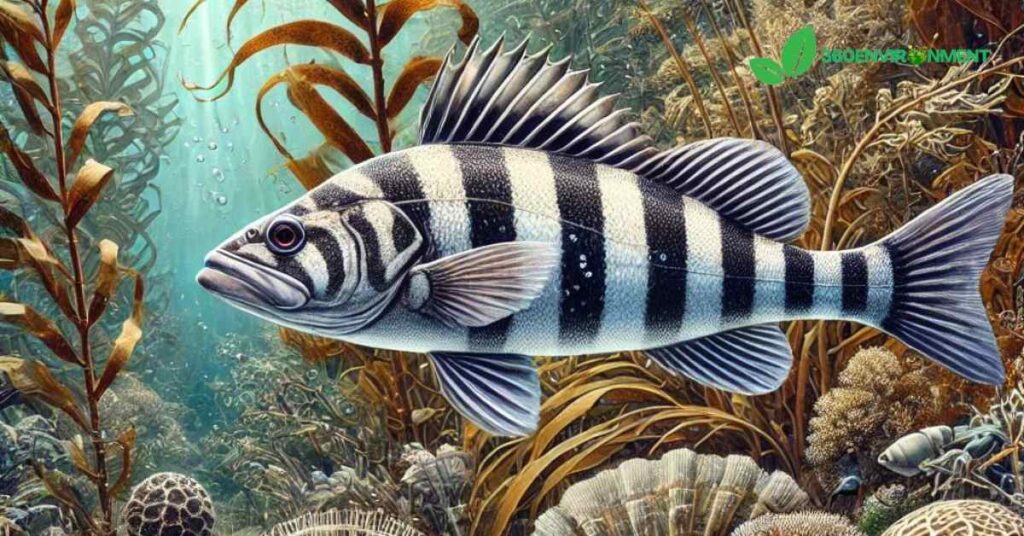
1.1 Taxonomy and Classification
- Kingdom: Animalia
- Phylum: Chordata
- Class: Actinopterygii (ray-finned fishes)
- Order: Perciformes
- Family: Kyphosidae
- Genus: Hermosilla
- Species: Hermosilla azurea
Zebra perch are often recognized for their striking black-and-white vertical stripes, which are most prominent in juveniles and fade slightly in adults. This unique appearance makes them relatively easy to identify among other fish species that inhabit coastal waters.
1.2 Physical Characteristics
Zebra perch are medium-sized fish that typically grow up to about 45 cm (18 inches) in length and can weigh between 1 and 3 kilograms (2 to 6 pounds). They have a somewhat oval-shaped body, which is laterally compressed, helping them navigate through kelp forests and rocky reefs with ease.
- Coloration: The zebra-like black stripes running along the length of their body give the fish its name. These stripes are most vivid in young zebra perch but may become less pronounced as the fish matures. In adults, the body takes on a more silvery-grey tone.
- Body Shape: Like many other fish adapted to rocky habitats, zebra perch have a streamlined, oval body that allows them to move efficiently through underwater crevices and around obstacles such as rocks and kelp stalks.
- Fins: Zebra perch have strong pectoral fins, which give them excellent maneuverability in tight spaces. They also have a small but sturdy dorsal fin, which helps them stabilize while swimming in rough coastal waters.
2. Habitat and Geographic Distribution
Zebra perch are primarily found in the northeastern Pacific Ocean, inhabiting nearshore environments that provide ample food and shelter. Their distribution is closely linked to the presence of kelp forests and rocky reefs, both of which play a crucial role in their survival.
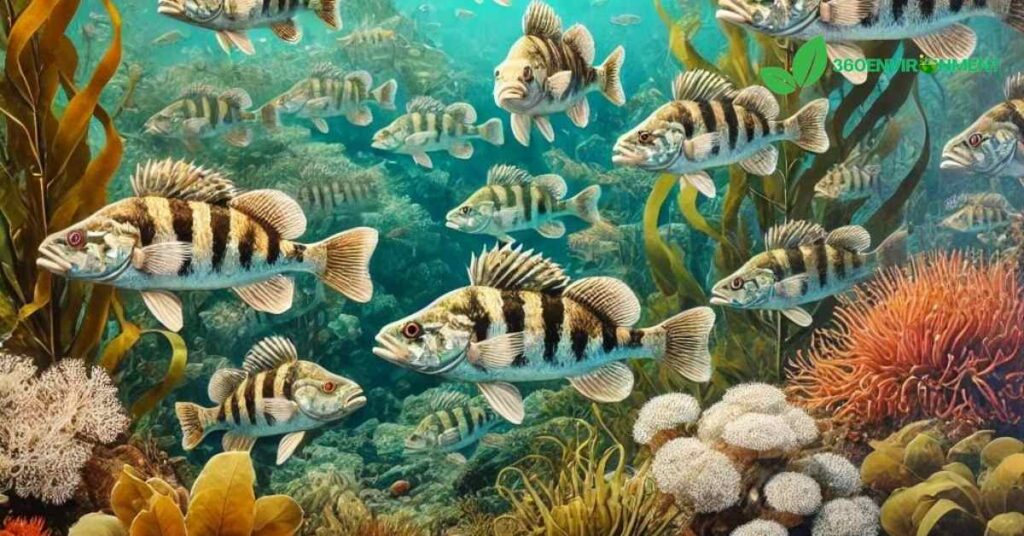
2.1 Habitat Preferences
Zebra perch prefer temperate waters and are often found in regions with a lot of marine vegetation, such as kelp forests, as well as around rocky reefs and underwater structures. These habitats offer the fish protection from predators, as well as access to their primary food sources.
- Kelp Forests: Zebra perch are commonly associated with kelp forests, where they can find shelter among the long, swaying fronds. Kelp forests provide both protection from predators and a rich source of food, particularly in the form of algae and small invertebrates which is why this question is asked are zebra perch good to eat?
- Rocky Reefs: Rocky reefs and boulder-strewn areas are another favored habitat for zebra perch. The complex structure of these environments offers numerous hiding places and feeding opportunities. The zebra perch’s striped coloration helps it blend into the dappled light and shadows of these rocky environments.
- Water Depth: Zebra perch are generally found at depths ranging from 3 to 40 meters (10 to 130 feet), though they tend to prefer shallower waters closer to the shore. This makes them accessible to recreational fishermen, though they are not a primary target for most commercial fisheries.
2.2 Geographic Distribution
Zebra perch are found along the Pacific coast of North America, particularly from Southern California to Baja California. Their distribution tends to be concentrated in regions where kelp forests and rocky reefs are prevalent.
- California Coast: Zebra perch are common in the kelp forests off the coast of California, especially in southern regions such as the Channel Islands and around La Jolla. They can also be found in central California, though they are less abundant in the colder waters further north.
- Baja California: The coastal waters of Baja California provide an ideal environment for zebra perch, thanks to the warm waters and abundance of kelp and rocky habitats. Here, zebra perch can often be found alongside other species of sea chubs and reef fish.
3. Diet and Feeding Behavior
One of the key factors that influences whether or not a fish is “good to eat” is its diet. Fish that consume algae, plankton, and small invertebrates tend to have a milder flavor compared to fish that primarily feed on other fish. The zebra perch falls into the former category, with its diet being mostly herbivorous.
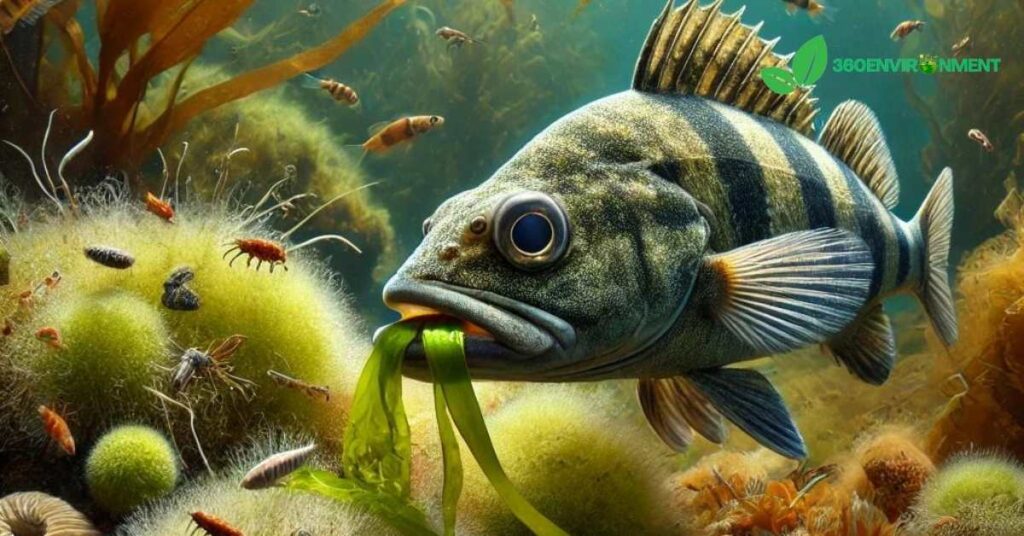
3.1 Herbivorous Diet
Zebra perch are primarily herbivores, with algae making up the bulk of their diet. In the kelp forests and rocky reefs where they live, zebra perch graze on different types of algae that grow on rocks and other underwater surfaces.
- Algae Consumption: The zebra perch’s diet is dominated by various species of algae, including brown, green, and red algae. Their specialized teeth allow them to efficiently scrape algae off rocks, making them an important part of the ecosystem as they help control algal growth.
- Supplemental Diet: While zebra perch are predominantly herbivorous, they may also consume small invertebrates, such as amphipods and copepods, that live among the algae. These invertebrates provide additional protein and help diversify the fish’s diet.
- Foraging Behavior: Zebra perch are active during the day and spend much of their time foraging in the shallow waters of kelp forests and rocky reefs. They use their keen sense of sight to locate algae and small invertebrates, and their strong jaws to scrape food off hard surfaces.
3.2 Ecological Role as Grazers
As grazers of algae, zebra perch play an important ecological role in maintaining the health of kelp forests and rocky reefs. By feeding on algae, they help prevent algal overgrowth, which can smother other marine organisms and reduce biodiversity.
- Kelp Forest Health: By controlling the growth of algae on kelp and other underwater structures, zebra perch help maintain the balance of marine ecosystems. Their grazing helps ensure that light can reach the kelp’s fronds, allowing it to photosynthesize and grow.
- Competition for Resources: Zebra perch often share their habitat with other herbivorous fish, such as halfmoon fish and opaleye (Girella nigricans). While competition for algae can be fierce, zebra perch are highly effective foragers and are capable of holding their own in these resource-rich environments.
4. Predators and Defense Mechanisms
Zebra perch are an important prey species for a variety of larger predators, including sharks, sea lions, and larger fish. To survive in these predator-rich environments, zebra perch rely on their agility, coloration, and habitat to evade capture.
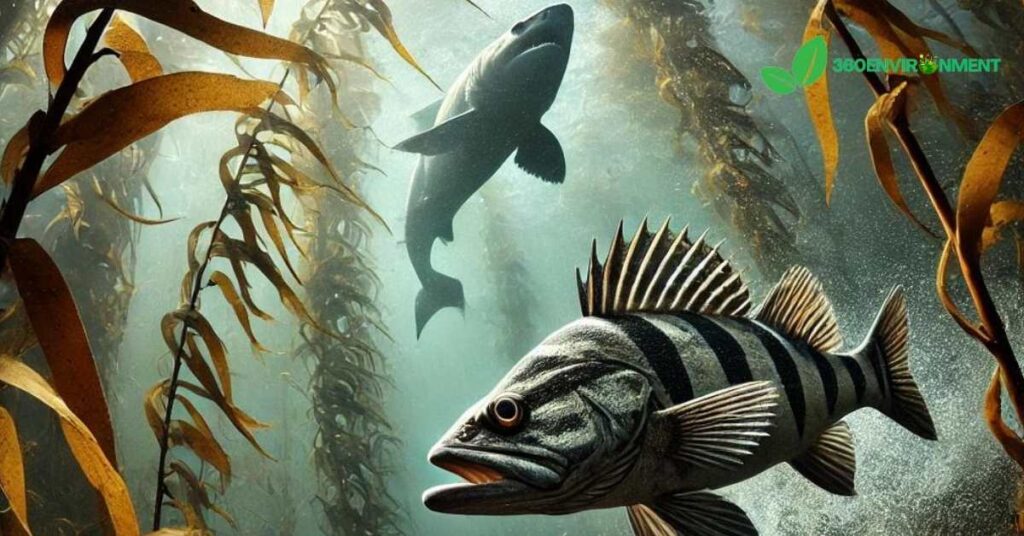
4.1 Natural Predators
Zebra perch are part of a complex food web in the kelp forests and rocky reefs where they live. Their position as herbivores makes them a vital food source for larger carnivores.
- Sharks: Larger predatory sharks, such as leopard sharks and smoothhound sharks, are known to prey on zebra perch when they venture too far from the safety of kelp forests.
- Sea Lions: Marine mammals like sea lions also prey on zebra perch, particularly in areas where sea lions frequently hunt in kelp forests. Their agility and speed make them formidable predators.
- Larger Fish: Zebra perch are also preyed upon by larger predatory fish such as California halibut and white seabass, which are common in the same habitats.
4.2 Defense Mechanisms
Zebra perch use several strategies to avoid predation, including their ability to blend into their surroundings, quick swimming, and the structural protection offered by their habitat.
- Camouflage: The zebra-like stripes on the perch’s body provide a form of camouflage, helping them blend into the dappled light of kelp forests and rocky reefs. This coloration is especially useful when zebra perch are stationary, making it harder for predators to spot them.
- Agility: Zebra perch are quick and agile swimmers, able to dart between kelp fronds and rocky outcroppings to evade predators. Their strong pectoral fins allow them to maneuver efficiently in tight spaces.
- Habitat Use: Zebra perch often seek refuge in dense kelp forests or among the crevices of rocky reefs when threatened. These complex habitats provide ample hiding spots and make it difficult for larger predators to pursue them.
5. Zebra Perch and Human Interaction: Are They Good to Eat?
The central question we aim to address is: Are zebra perch good to eat? While zebra perch are not a common target for commercial fisheries, they are occasionally caught by recreational anglers. Their culinary value, however, remains a subject of debate.
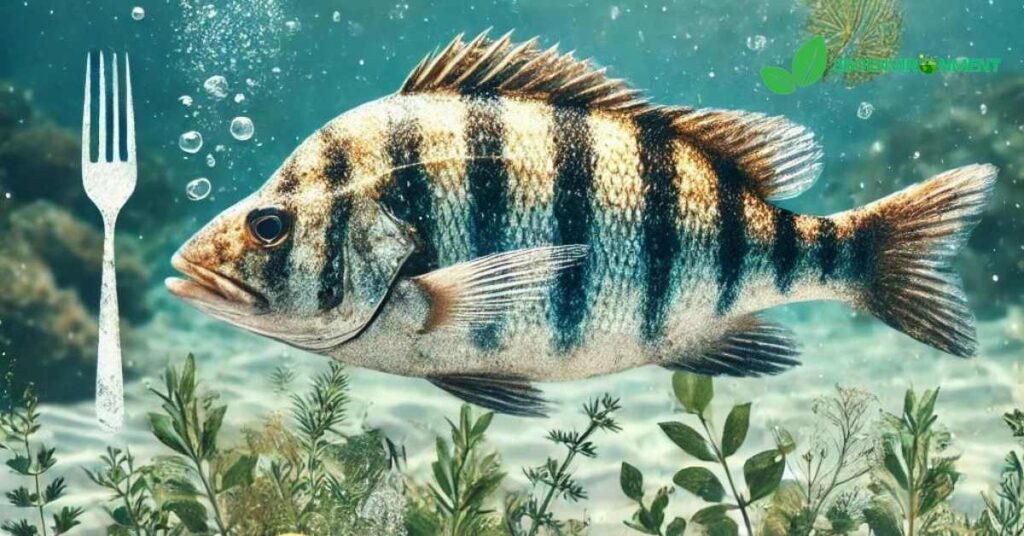
5.1 Culinary Value
The zebra perch is edible, but opinions on its taste and texture vary. It is generally considered to be a mild, somewhat bland fish, especially when compared to more popular fish species such as snapper or halibut.
- Taste: Zebra perch has a mild, somewhat earthy flavor due to its herbivorous diet. Fish that primarily consume algae tend to have a less pronounced fishy taste, which may appeal to some but be considered bland by others.
- Texture: The texture of zebra perch is firm but can become mushy if not prepared properly. It is best when cooked fresh, as freezing the fish can affect the texture and make it less desirable.
- Common Preparation Methods: Zebra perch can be cooked in a variety of ways, including grilling, frying, or baking. It is often seasoned with herbs, lemon, or butter to enhance its flavor. In some regions, it may be prepared with local spices and served as part of a traditional dish.
5.2 Health Considerations
Like many other fish species, zebra perch is a healthy source of protein, omega-3 fatty acids, and other essential nutrients. However, there are some considerations to keep in mind regarding its consumption.
- Mercury Levels: Zebra perch, like many coastal fish species, may contain trace amounts of mercury and other contaminants, depending on the waters in which they are caught. It’s important to consult local advisories on fish consumption, particularly for pregnant women and children.
- Sustainability: Zebra perch are not currently overfished, and their populations are stable in most areas. However, it is always advisable to practice sustainable fishing by adhering to size and bag limits when catching zebra perch, to ensure the long-term health of the species.
6. Ecological Importance and Conservation
While zebra perch may not be a culinary favorite, their role in maintaining the health of marine ecosystems cannot be overstated. As grazers in kelp forests and rocky reefs, zebra perch help control algal growth and contribute to the overall biodiversity of these habitats.
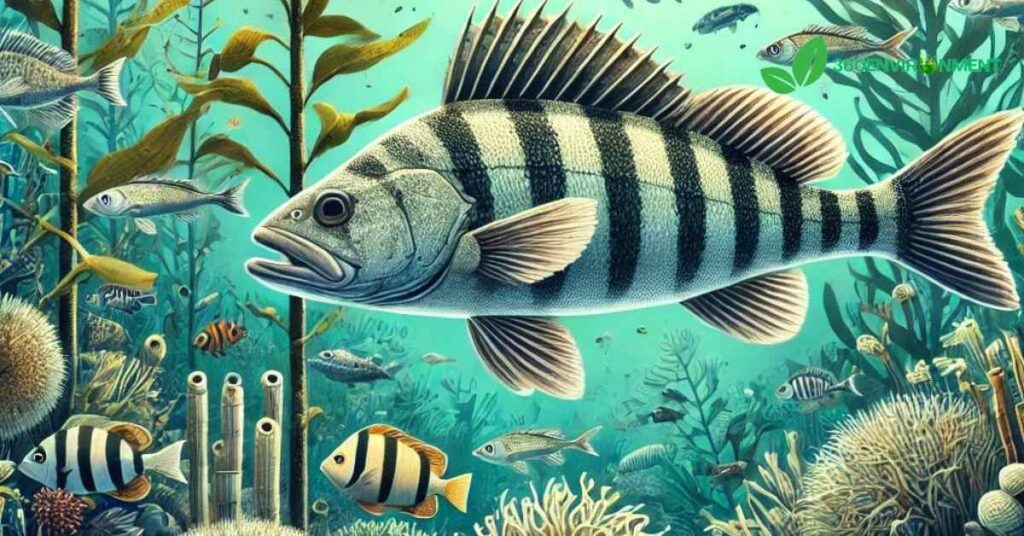
6.1 Ecological Role in Kelp Forests
The zebra perch’s role as an herbivore makes it an important part of the ecosystem. By feeding on algae, zebra perch helps prevent algal overgrowth, which can have detrimental effects on kelp forests.
- Algal Control: Zebra perch graze on algae that grow on kelp and rocks, helping to keep these surfaces clear and allowing other marine organisms to thrive. Without grazers like zebra perch, algal overgrowth could block sunlight and impede the growth of kelp and other plant life.
- Biodiversity Support: By maintaining the balance of algae in kelp forests, zebra perch indirectly supports a wide variety of other species, from invertebrates to larger fish and marine mammals.
6.2 Conservation Status
Zebra perch populations are currently stable, and the species is not considered to be at risk. However, habitat degradation, pollution, and climate change pose potential threats to their long-term survival.
- Kelp Forest Degradation: Kelp forests are vulnerable to rising ocean temperatures and pollution, both of which can lead to the decline of these critical habitats. The loss of kelp forests would have a significant impact on zebra perch populations, as well as the many other species that rely on these environments.
- Climate Change: Warming ocean temperatures and ocean acidification may affect the distribution of zebra perch and the health of their habitats. As coastal waters change, zebra perch may be forced to adapt or relocate to new areas.
7. Conclusion: Are Zebra Perch Good to Eat?
So, are zebra perch good to eat? The answer largely depends on personal preference. While zebra perch are certainly edible, they are not typically regarded as a top-choice fish for the dinner table due to their mild flavor and somewhat variable texture. However, they can be enjoyed when prepared properly, especially when grilled or fried with appropriate seasoning.
Beyond their culinary value, zebra perch play a vital ecological role in coastal ecosystems, particularly in kelp forests and rocky reefs. Their grazing behavior helps maintain the balance of algae, supporting the health of these habitats and the many species that depend on them.
In conclusion, the answer to the question “are zebra perch good to eat” is while zebra perch may not be the first choice for most seafood lovers, they are a valuable part of marine biodiversity and contribute significantly to the health of their ecosystems. If you do decide to try zebra perch, remember to source them sustainably and follow local fishing guidelines to ensure the continued health of this important species.
Read More: Exploring the World of Freshwater Fish: An In-Depth Guide

